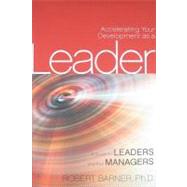
Note: Supplemental materials are not guaranteed with Rental or Used book purchases.
Purchase Benefits
Looking to rent a book? Rent Accelerating Your Development as a Leader A Guide for Leaders and their Managers [ISBN: 9780470593646] for the semester, quarter, and short term or search our site for other textbooks by Barner, Robert. Renting a textbook can save you up to 90% from the cost of buying.
| Participant's Guide | p. 1 |
| Participant's Preface | p. 3 |
| Managing a Company of One | p. 7 |
| Closing the Gap | p. 17 |
| Building Your Plan | p. 38 |
| Leveraging Developmental Assignments | p. 58 |
| Accelerating Your Learning | p. 85 |
| Managing Your Personal Brand | p. 122 |
| Leader's Guide | p. 161 |
| Leader's Preface | p. 163 |
| The What and the Why of Managerial Coaching | p. 165 |
| How to Implement Coaching | p. 175 |
| Helping Others to Identify Developmental Gaps | p. 188 |
| Helping Others Build Their Plans | p. 196 |
| Helping Others Leverage Developmental Assignments | p. 205 |
| Helping Others Accelerate On-the-Job Learning | p. 217 |
| Coaching Others on Brand Management | p. 231 |
| About the Author | p. 240 |
| Index | p. 243 |
| Table of Contents provided by Ingram. All Rights Reserved. |
The New copy of this book will include any supplemental materials advertised. Please check the title of the book to determine if it should include any access cards, study guides, lab manuals, CDs, etc.
The Used, Rental and eBook copies of this book are not guaranteed to include any supplemental materials. Typically, only the book itself is included. This is true even if the title states it includes any access cards, study guides, lab manuals, CDs, etc.